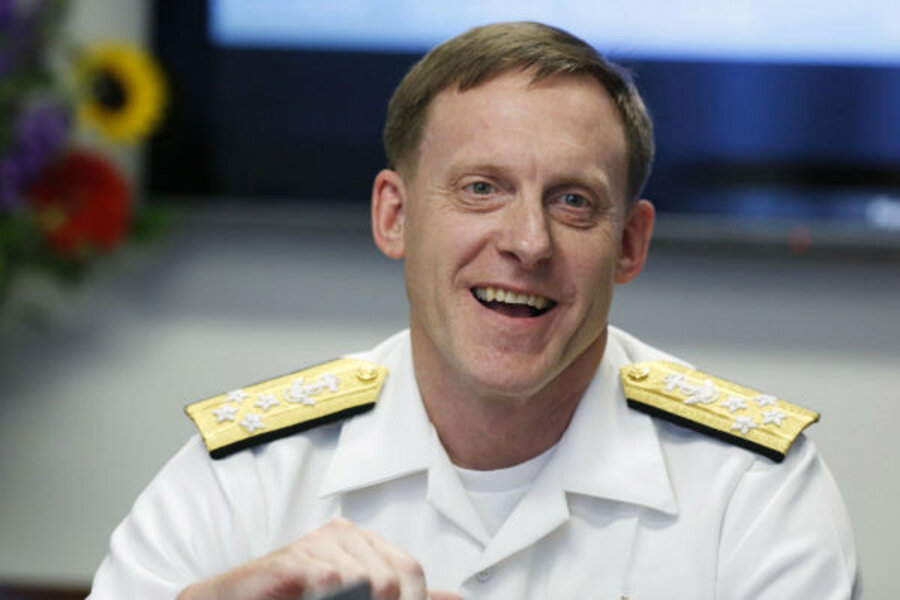NSA not amassing Americans' photos for face-recognition program, chief says
Loading...
Adm. Michael Rogers, chief of the National Security Agency, acknowledged Tuesday that the NSA uses facial recognition technology to investigate foreign intelligence and counterterrorism targets, but he insisted that photos of Americans are generally off limits unless those individuals are linked to an investigation of a foreign subject.
“We have very specific restrictions when it comes to US persons," Rogers told attendees of a Bloomberg Government cyber-security conference, according to Bloomberg. “In broad terms, we have to stop what we’re doing if we come to the realization that somebody we’re monitoring or tracking has a US connection that we were unaware of.”
The blogosphere erupted after a New York Times report on June 1, based on documents leaked by former-NSA contractor Edward Snowden, said the spy agency is amassing a database of millions of images for use in its facial recognition program.
When the Times asked NSA spokeswoman Vanee Vines whether the agency is collecting images that Americans have shared on social media, she declined to comment.
Rogers's comments Tuesday imply that the NSA is not routinely sweeping up and curating images of Americans online or their driver's license photos. His willingness to discuss the issue with Bloomberg marks a step toward greater NSA transparency, something the admiral has advocated since he took the helm of the NSA and US Cyber Command in April.
During his Senate confirmation hearing in March, Rogers pledged to “be as transparent as possible about what we’re doing [at the NSA] and why,” Reuters reported.
The NSA track record for transparency would not be described as good. Secrecy is so ingrained in the NSA mission that the organization has been jokingly referred to as No Such Agency. The series of documents made public by Mr. Snowden and cooperating news outlets over the past year has helped to cement that reputation.
Snowden’s revelations have forced a national dialogue about how far the federal government should be able to reach into the private lives of citizens at home and abroad in the name of national security.
The House last month approved legislation to rein in the scope of NSA surveillance, which had been extended after 9/11 under the USA Patriot Act. The new measure, the USA Freedom Act, prohibits the bulk collection of data about domestic phone calls. The Senate has yet to vote on the bill.
Rogers told conference attendees that the "broad dialogue of what we’re doing and why is a good thing for us as a nation. I don’t question that for one minute,” The Guardian ‘s Spencer Akerman reports. Mr. Akerman's report notes that “he neglected to mention that the agency and its allies worked behind the scenes last month to weaken privacy and transparency provisions in a major surveillance reform bill.”






